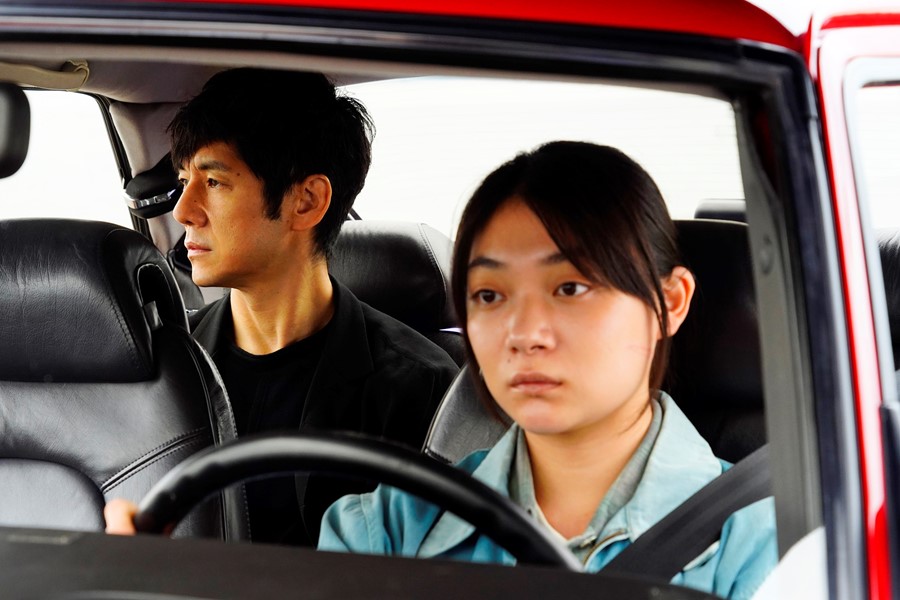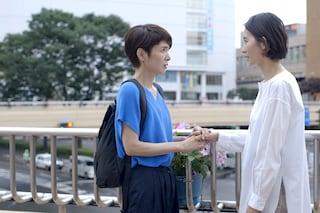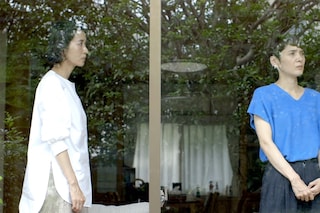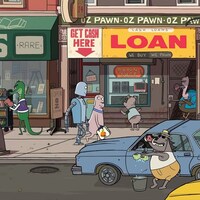Based on a short story by Haruki Murakami, the Japanese filmmaker’s Drive My Car is a drama filled with secrets, infidelity, and increasingly complex human relationships
In Ryūsuke Hamaguchi’s films, the characters tend to be artists and fantasists – the latter are so skilled at deception and denial, it’s practically an artform, too. Take the Japanese director’s eleventh movie, Wheel of Fortune and Fantasy, a triptych of twisty, talky stories that won the Silver Bear at this year’s Berlin Film Festival. In the third chapter, “Once Again”, Natsuko (Fusako Urabe) bumps into Aya (Aoba Kawai), whom she secretly harboured a crush on 20 years ago at school. Except at Aya’s house, the two women realise they’ve never met before. It’s a case of mistaken identity – or perhaps, for Natsuko, romantic wish-fulfilment.
What the pair do next typifies Hamaguchi’s obsession with roleplaying. In her living room, Aya agrees to impersonate Natsuko’s crush, allowing Natsuko to vomit out two decades of pent-up feelings to an amateur improviser. Afterwards, Aya reveals that her heart also panged for a female classmate, and so Natsuko pretends to be the grown-up version of Aya’s dream girl. By the time the pair warmly embrace, are they hugging as Natsuko and Aya? As their respective objects of desire? Or a combination of all three pairings?
When Hamaguchi’s second award-winning film of the year, Drive My Car, premiered at Cannes, it shared so many thematic concerns with Wheel of Fortune and Fantasy that it could be considered a fourth story in the series. “The purpose was to make a long movie and short movies, alternating,” the 41-year-old director tells me, via an interpreter, over Zoom, in early November. “The short movies could be a revision of the long movie, or prep for the long movie. With these three stories in Wheel of Fortune, I tried things I could foresee as obstacles in Drive My Car.”
Hamaguchi adapted Drive My Car from a Haruki Murakami short story of the same name, expanding a skeleton plot into an insightful, all-encompassing, 179-minute drama about grief, art, and why anyone does anything in this cruel, painful world. At the centre, Yūsuke (Hidetoshi Nishijima) is a theatre director with a secret. Well, someone else’s secret. Yūsuke knows that his wife, Oto (Reika Kirishima), is sleeping with other men, including a younger, sexy actor, Takatsuki (Masaki Okada). For the sake of their marriage, Yūsuke fakes obliviousness to Oto’s infidelity. However, across three hours, the drama’s various messy, increasingly complex human relationships are examined with emotional, poetic diligence.
Notably, in Drive My Car, which won the Best Screenplay Prize at Cannes, the opening credits take around 40 minutes to appear, which is roughly the length of a chapter in Wheel of Fortune. In Hamaguchi’s shorts, a human bond can soar through mutual dishonesty; his longer features, such as Asako I & II and Happy Hour, emphasise the sour aftertaste. “Lying works in the short-term,” Hamaguchi says. “If you’re good at lying, not everything will come to the surface. In a short film, you can have this lie – it can be a perfect lie, and it could be the end of the movie. But in a longer film, as a director, I think of how the lying and roleplay will cause an eventual breakdown in the relationship.”
The delayed title sequence is to signify a time jump when Oto unexpectedly dies. It’s two years later when Yūsuke, still grieving, agrees to direct a stage version of Uncle Vanya at a theatre in Hiroshima. For the lead role of Vanya, Yūsuke decides not to cast himself, the ideal candidate, but Takatsuki, a baby-faced hothead who looks like he should be in a J-pop band, not playing an aging Chekhov character who pontificates about his impending death. By doing so, is Yūsuke psychologically torturing an inexperienced actor, or gaining clues about his dead wife? As it’s Hamaguchi, it takes a while to draw any conclusions, and even then any theories are distorted as minor and major characters reveal hidden depths. A stranger can seem unknowable until you hit the road with them.
“If you’re good at lying, not everything will come to the surface. In a short film, you can have this lie – it can be a perfect lie, and it could be the end of the movie” – Ryūsuke Hamaguchi
For Yūsuke, long car trips are also how he meditates on his craft. To prepare for a play, he drives his beloved vehicle, a red Saab 900, and listens on a loop to lines read out by Oto. Even after his wife’s demise, Yūsuke plays a recording of her voice like a ghostly presence in the passenger seat. It echoes a plot point in the second chapter of Wheel of Fortune, “Door Wide Open”, in which a male professor, Segawa (Kiyohiko Shibukawa), asks a flirty woman, Nao (Katsuki Mori), to email him a MP3 of her reading aloud his prose.
When I ask if Hamaguchi is riffing on ASMR, he claims to have never heard of the online phenomenon. After I struggle to explain it, the interpreter comes up with her own definition in Japanese. He still looks confused. “I really have no idea about ASMR,” the director says. “But I understand that sound can trigger pleasure, especially if the human voice expresses the condition of the body of the person speaking.”
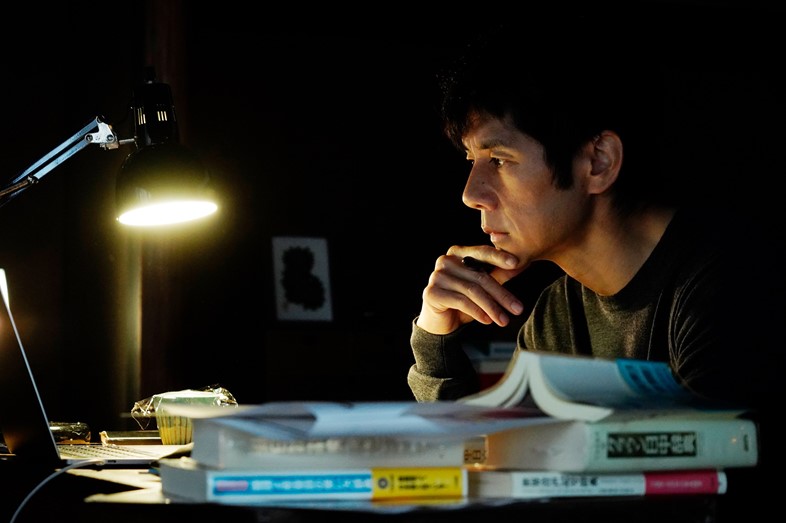
Another connection between “Door Wide Open” and Drive My Car involves the erotically charged creation of art. Segawa’s novel details bedroom romps with such pervy specificity, Nao jokes that he was “erect” when writing it. Likewise, in Drive My Car, Oto would brainstorm her screenplay ideas during intercourse, reciting plot ideas while riding her partner in bed. “Creativity can be born out of sexual desire,” Hamaguchi says. “It’s more to do with an orgasmic thing – you are able to access something that you have inside you, without you being aware of it.”
At Yūsuke’s request, his accommodation is an hour’s drive from the theatre. However, for insurance purposes, Yūsuke isn’t allowed behind the wheel; he reluctantly agrees to be chauffeured by Misaki (Tōko Miura), a chain-smoking woman who’s poker-faced and inscrutable. Over time, Yūsuke begrudgingly appreciates Misaka’s company, paying her the ultimate compliment: when she’s driving, he forgets he’s in the car. Yet as the recording of Oto’s tape plays on a loop, the pair’s silent dynamic morphs in surprising ways. Neither are chatty, and so their eventual bond is via a patient, onscreen osmosis.
“Creativity can be born out of sexual desire. It’s more to do with an orgasmic thing... you are able to access something that you have inside you, without you being aware of it” – Ryūsuke Hamaguchi
In Hamaguchi’s initial vision, Misaki, Yūsuke and Takatsuki would have been the only Japanese characters in a Korean setting. Then COVID altered his plans. “Had we shot in Busan, the intimacy amongst these three Japanese characters would have been stronger,” the director says. “But that’s the only thing that changed in terms of the characters… We looked for somewhere similar to what we were going to shoot in Busan, anyway.”
In its epilogue, Drive My Car depicts a masked character doing their grocery shopping during the pandemic. More obliquely, “Once Again” in Wheel of Fortune teases that Japanese society has been upended by a computer virus. “With Drive My Car, I wanted to make it closer to the world we’re living in right now. Also, it would be a good indication that time actually passed in the storyline.
“With Wheel of Fortune, it was shot right after the Japanese version of lockdown finished. The script was written in 2019, but it felt too optimistic to shoot it as it is. Metaphorically, I created a bit of science-fiction. During lockdown, in the actual world, we were only able to meet online. But in this world, with a computer virus shutting everything down, we can only meet offline. We have to meet up in person. I really thought that these things happening in society, I couldn’t ignore.”
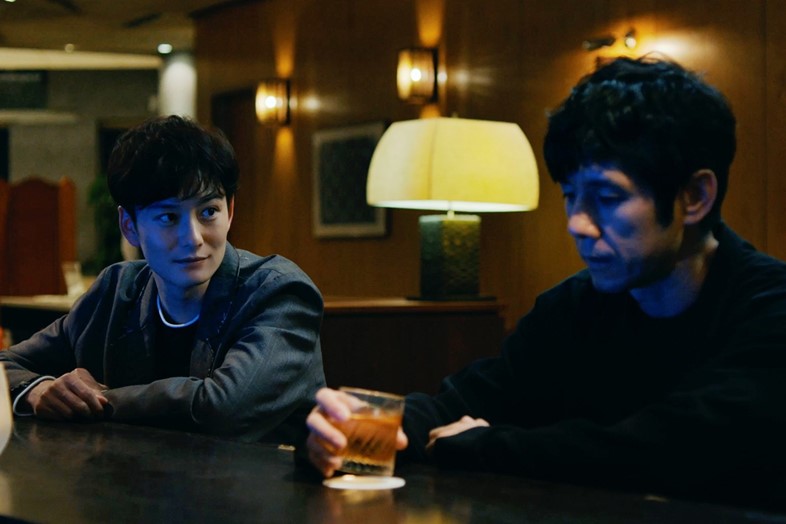
While Hamaguchi isn’t usually considered a sci-fi director, his first full-length feature was a 2003 remake of Tarkovsky’s Solaris. The mysterious project – not even a still image can be found online – was an assignment at film school from Hamaguchi’s tutor, Pulse director Kiyoshi Kurosawa. “There’s a problem with the copyright,” Hamaguchi says. “I don’t think it’s going to be released. And it’s not like I actually want it to be released, either.”
Hamaguchi’s next films ranged from dramas depicting failed romances (Passion, The Depths) to three documentaries about the 2011 tsunami in Tohoku. The first time many discovered him in the UK, though, was when Happy Hour, a 317-minute female-led drama, played at the 2015 London Film Festival. Despite its acclaim, Happy Hour didn’t receive a theatrical release. Three years later, Asako I & II, Hamaguchi’s first film to compete for the Palme d’Or, was even better: a young woman starts dating a doppelganger of her ex-boyfriend and stumbles into a love triangle when he returns. It also wasn’t released in UK cinemas. (London’s Close-Up Film Centre has programmed a career-spanning retrospective from November 19 onwards.)
“Every story is sort of an adaptation. It could be based on a novel. Or if you’re writing an original story, it’s an adaptation of real life, in a way” – Ryūsuke Hamaguchi
So for many viewers, Drive My Car will be their first taste of Hamaguchi’s subtle, slow-burn storytelling. The recurring image, as suggested by the marketing, is of Yūsuke and Misaki in the vehicle. Despite the seemingly mundane setting, Hamaguchi transforms these Rohmer-esque conversations into cinematic set-pieces. During one tense interaction, the car speeds through a tunnel, picking up the sound of a vacuum; the vehicle then emerges into a snowy landscape to symbolise their emotional catharsis.
The director explains that even the positioning is character-related. “Yūsuke’s sitting in the backseat at first, checking her in the rear-view mirror, to see how she’s doing. In the next stage, he’s sitting right behind her, so that none of them can see each other. That’s the most comfortable position for both of them. And then when he sits in the passenger seat, he wants to distance himself from Takatsuki.”
Further digging reveals some overlap between Yūsuke and Hamaguchi, such as their shared method of training actors: both make their performers read the script aloud at a table until the rhythm of the words is ingrained in their bones. When asked how much he draws from his own life, Hamaguchi responds, “Every story is sort of an adaptation. It could be based on a novel. Or if you’re writing an original story, it’s an adaptation of real life, in a way. Otherwise you can’t find any material at all. It has to come from somewhere. For example, Hong Sang-soo is really good at making work that the audience thinks is his life. But I don’t think everyone needs to go that far.”
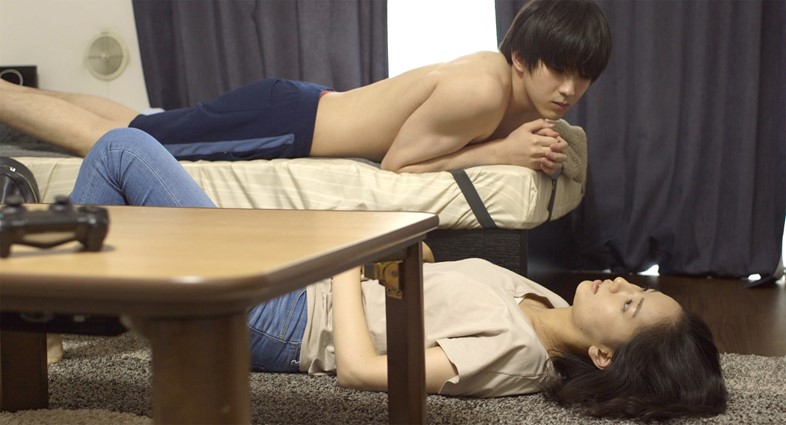
Is it possible to live a boring life and be a great artist? “A really emotional, deep experience isn’t a necessity,” he says. “I think it’s more to do with technique, skills, and talent. You can be a perfectly ordinary person and be a good artist. It’s possible.”
Next up for Hamaguchi is a documentary feature – he declines to go into specifics – and then, at some point, he’ll continue the pattern of shooting two fiction features simultaneously. “There are four more stories in Wheel of Fortune. I really want to finish it before I turn 50. Like I said, I’m alternating between a long movie and short movies. Once I know what I want to make in terms of a longer movie, I’ll work on it.”
For the past two decades, the so-called “4Ks” – the four Japanese directors who dominated the international festival circuit – were Naomi Kawase, Takeshi Kitano, Hirokazu Kore-eda, and Kiyoshi Kurosawa. Last month, Variety declared that Hamaguchi has “broken through the 4K barrier” to become its fifth member. Will Hamaguchi’s newfound fame instigate an English-language remake of Drive My Car? “I’m all for it,” the director says. “The story is owned by Haruki Murakami, so it’s fundamentally his.” As for who should direct it, he responds with two words, followed by a laugh: “Steven Spielberg.”
Drive My Car opens in UK cinemas on November 19. Wheel of Fortune and Fantasy will be released on February 11, 2022
